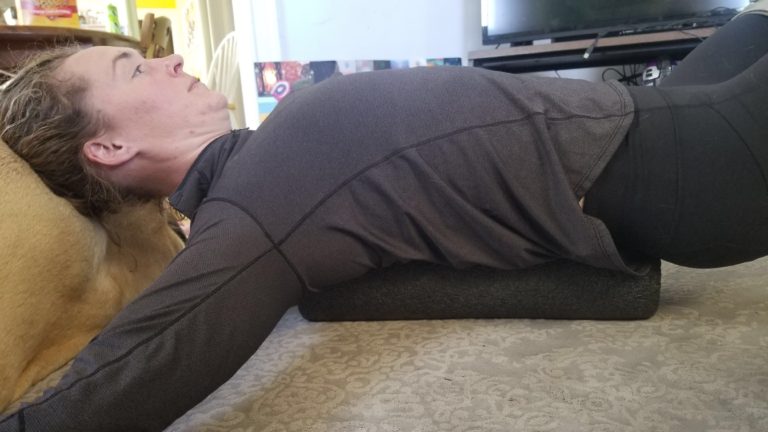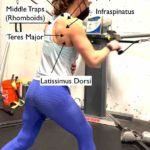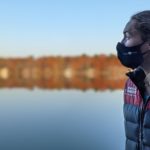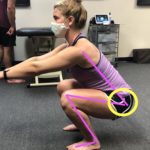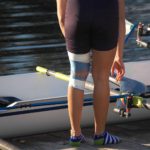What is the effect of rowing stress on your shoulder mobility?
The shoulder muscles we are going to talk about are your serratus anterior, pectorals, and rotator cuff. All of these muscles function to help you maintain control and position of your shoulder blade throughout the rowing stroke and with all equipment management. Within the stroke itself, you generally maintain your arms at a similar height, asking your shoulder blade to remain connected to your body moving around your ribs as your reach the catch for your outboard arm in sweep rowing AND maintaining position without rotating or winging as your arrive at the catch for your inboard arm and in sculling. Rowing is not a sport that asks you to regularly test the max stability of your shoulder going overhead or behind your body BUT you are constantly demanding control work from all these muscles. The stress and strain of being used as stabilizers require a lot of postural and endurance-based strength. When you ask these muscles to continuously work for you, they get overworked and can get tired and tight. Keeping them strong and mobile will help you keep those shoulder blades moving and working for you!
Keeping your shoulders happy and mobile just makes you feel good and makes your connection through the stroke feel better too! There’s a few different ways to give your shoulders some love/care, attending to your longer/larger back muscles that attach to your shoulder (Lats, lower traps) or honing in on the shorter closer to the joint muscles, your pectoralis major and minor, your serratus anterior your rotator cuff muscles. This post focuses on these closer to the shoulder very important muscles! Below are a couple of pictures of the muscles we are talking about so you have a visual.
What are your pecs, rotator cuff, and serratus anterior muscles?
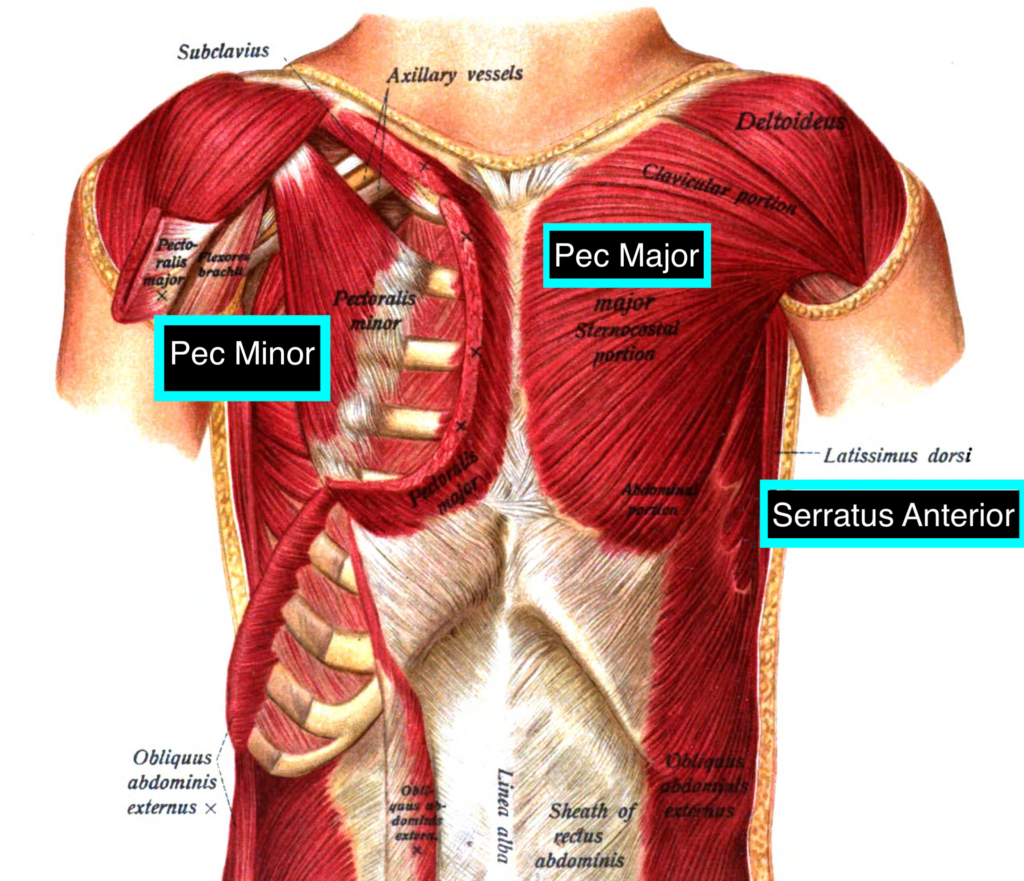
Pec major is this big fan-shaped muscle that rotates your arm in and pulls sit towards your side. The top part of the fan also helps you lift your arm up. It contributes to keeping your arms in the right position while rowing.
Pec minor is a narrower triangle that attaches to the front of your shoulder blade (coracoid process) and attaches to your ribs. It helps stabilize your shoulder blade by pulling it down and forward on your ribs.
Serratus Anterior helps you keep your shoulder blade from popping away from your body, it pulls it close to your ribs and around the body as you bring your arms up and forward (getting to the catch!). When you lift your arm over 90 degrees (boat overhead) your serratus helps rotate your shoulder blade to get your arm up.
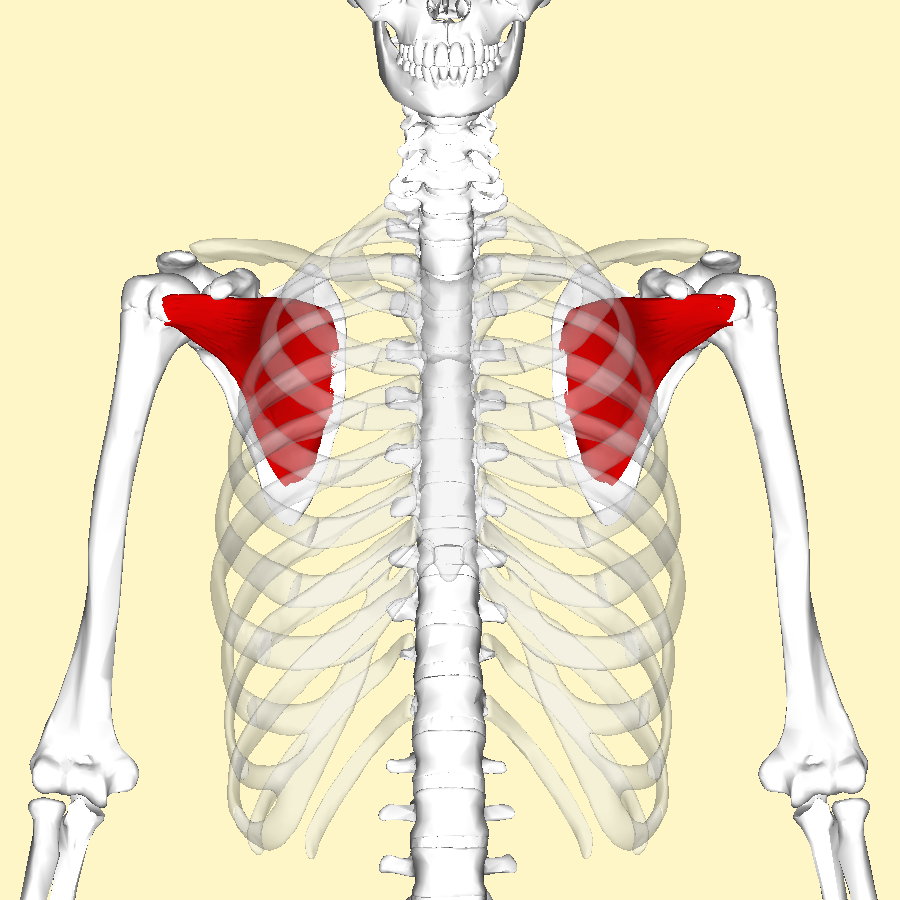

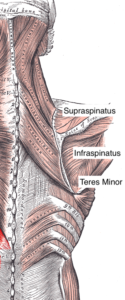

Rotator Cuff:
Supraspinatus, Infraspinatus, Teres Major and Subscapularis (red muscle in the picture that sits on the front part of your shoulder blade against your ribs in the back of your body)
These guys all work together to help you abduct, externally rotate, and medially rotate your shoulder.
Why do my pecs always seem tight?
More often than not, your pecs in front of your chest tend to get tight. This is both rowing related and life-related. Texting, sitting, computer work, cooking, folding laundry, you name it, life generally is in front of us. Your pecs getting tight makes your shoulder blades come around your back and or tip forwards making the job of your scapular retractors (rhomboids and big back muscles) more challenging and it can put your rotator cuff in a poor position to do its job too. Basically, if your pecs get too tight, you will have a hard time using all the big muscles that we want to help transfer power through the rowing stroke. It also puts your neck, shoulders, ribs, and even elbows or forearms at risk for taking too much load and getting injured. It could change your breathing pattern or how you connect to the oar. So some regular TLC for your pecs is a great way to keep everyone happy and healthy!
Why do serratus and the rotator cuff need soft tissue work?
With all the effort your rotator cuff and serratus anterior do to help you stabilize your shoulders while you hold your arms out during the recovery, arrive at the catch, and to help you maintain a connection through the finish, the muscles get tired! When they are tired, they will get sore and tight. You can combat this in two ways:
The soft tissue work you will find below is a nice way to maintain length and pliability through these hard-working muscles so that they can continue to do their job and allow your other bigger more powerful muscles to work well too!
Why does breathing matter for the muscles of my shoulders?
Your breath is so powerful! There’s a reason why yoga teachers always talk about it, why PTs and strength coaches will include directions for when to breathe during an exercise, why when you are stressed your body tries to yawn or sigh to help rebalance your system. Breathing does many amazing things for your body in general. It’s a tool I use often during soft tissue work to encourage a tissue that is super tight or painful to relax. I’ll often ask for 5 deep breaths when I am working in a very tender area and it is awesome how much it can help! Deep breaths help balance your nervous system, relaxing the sympathetic system that can get ramped up during exercise or with stress and regaining a better balance with the parasympathetic system. Having this balance is an important part of initiating recovery after a workout. If your body is stuck in the “fight or flight” mode of the sympathetic system, it is difficult for digestion and other processes to happen to help repair your muscles between workouts. In line with this, deep breathing can help wash away cortisol, a major stress hormone, that impedes the recovery process and it can welcome in dopamine, which assists with putting your body into a state where recovery is more efficient. (Really this is a brief look at what will be more posts about breathing and recovery).
In more direct relation to self soft tissue work, breaths encourage muscles to relax, allowing you to get a deeper stretch or more bang for your buck out of some foam roller time. On top of that, when we are talking about pecs, in particular, they are accessory breathing muscles that often get overused at higher rates when we are trying to get air in and out as fast as possible. Some nice deep breaths expanding your rib cage and abdomen in all directions can help give a stretch to your pecs and help them relax.
Let’s get to some shoulder mobility!
Here are some shoulder self-care tips for you! There’s a lot out there, so don’t be shy to ask or share if you feel like you have “a good one” that I don’t mention! I don’t know everything and love looking for new ideas that work well for me! If you don’t follow my colleagues at Champion Physical Therapy and Performance, they are huge shoulder gurus because of specializing in lots of shoulder dominant sports (baseball, gymnastics, golf, CrossFit/powerlifting) and often post excellent resources/ideas for shoulder related self-care! Just holding a stretch, just foam rolling or just pressing into a trigger point likely will not give you the same overall benefit as doing a little bit of all three AND you throw some deep breaths in there and just wait and see what your body does for you! In general, the research for, range of motion improvements, post-workout soreness or dealing with tight spots does not prove any singular technique to be the “golden ticket,” so both from personal experience and what myself and my mentors at Champion have seen work with clients, mushing a few techniques together seems to work better than any of them individually. Another helpful hint, shoulder mobility is just a piece of the puzzle, if you really want to make a change and not just counteract postures from sitting all day, etc. make sure you’re working on strengthening your shoulders too!
Equipment options:
- Foam roller (normal or vibrating)
- Lacrosse Ball
- Wall
- Orb or larger ball (softball)
- Peanut Ball
- Wall/floor
Caution: in the front of your shoulder and in your armpit you have lots of wonderful nerves and arteries, you don’t want to squish them! If something is “pushing back” like a pulse, don’t hang out there (you’re on an artery). If you’re getting sharp or tingling up your neck or down your arm (you’re on a nerve), find a new spot!
Tips: You’re hunting for spots that create some amount of sensation. That might be a soreness, tightness, tenderness, aching.
1. Find some sensation, hang out for a few breaths or small movements, and find a new spot. 90 seconds is shown to be the minimally effective amount of time to spend on one muscle. You don’t have to go crazy either!
2. The research doesn’t show any longer-term benefit range of motion wise of more than 90 seconds either, just short term pain relief.
3. I look at these tools as a way to keep your machine oiled, keep things working well together. You might find it’s more effective for you as part of your warm-up or pieces might be better as part of a cool down or some things might fit with a lift rather than a row.
4. It’s all finding what works well for YOU!
Research: The research shows foam rolling or similar techniques are effective for the management of soreness. That said, research in this area is typically only slightly conclusive. Again, further proof to me that a variety of tactics is a nice strategy! A regular habit of using it helps create more change than cranking away for crazy amounts of time infrequently. Deep breaths kick start recovery help too!
Shoulder Mobility Lacrosse Ball and Foam Roller



